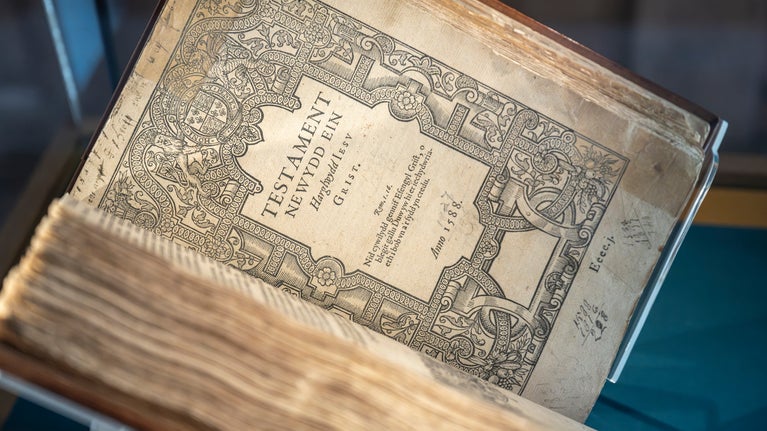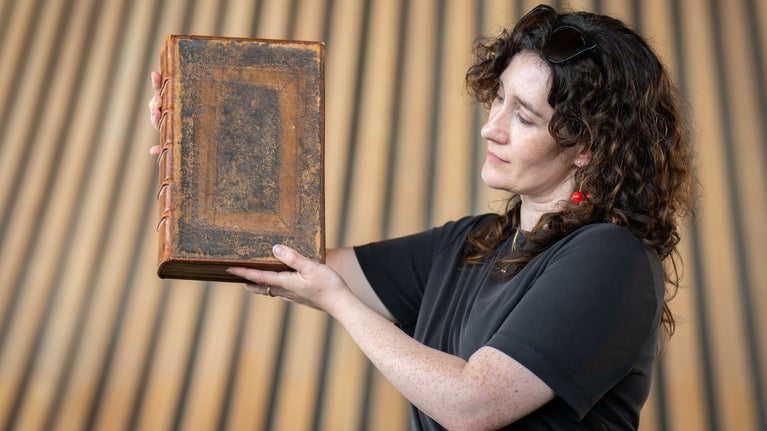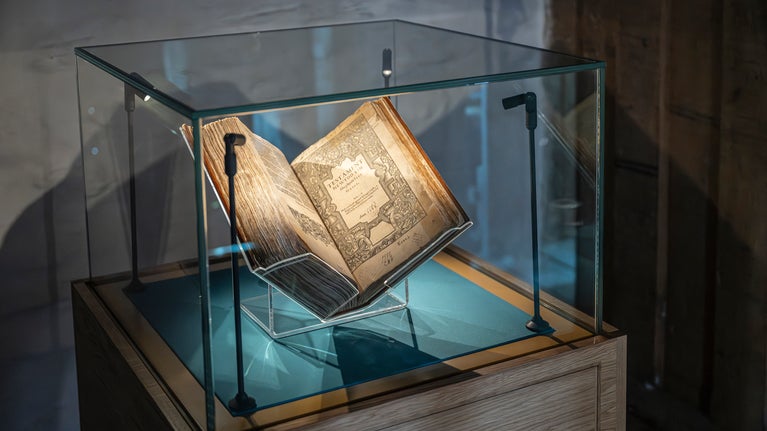1545
Born in Tŷ Mawr Wybrnant
William Morgan was born at Tŷ Mawr Wybrnant in 1545. The son of John and Lowri Morgan, tenants of the Gwydir estate near Llanrwst.

Of humble origins, William Morgan rose to be the Bishop of Llandaf and later St Asaph. When the call came to translate the Bible into Welsh, William Morgan was called upon. The translation was celebrated for its accuracy and easily accessible language, and formed the basis for modern Welsh literature, securing the language and ensuring that Welsh is still spoken today.
1545
William Morgan was born at Tŷ Mawr Wybrnant in 1545. The son of John and Lowri Morgan, tenants of the Gwydir estate near Llanrwst.
The Reformation saw King Henry VIII separate England and Wales from the Catholic Church. In 1538 he ordered churches to use only the English version of the Bible and Book of Common Prayer.
The 1536 Act of Union between England and Wales had also effectively banned the use of Welsh in law and administration. English was declared the only official language of England and Wales. The Welsh language lost the right to any public status.
As the Reformation spread, Protestant leaders tried to end the Church’s control over God’s word. Welsh scholars and churchmen argued their people were missing out on the benefits of the Reformation. They were determined Welsh people should have the Bible freely available to them in their own language.
A turning point came in 1563. Elizabeth I ordered that the Bible and Prayer Book be translated into Welsh by St David’s Day 1567. This was a political decision. Authorities feared the Welsh were loyal to Catholicism and hoped a Bible in their own language would attract them towards Protestantism.

The German invention of the printing press in the 15th century had made it possible to print and share Bibles in western European languages.
By the mid-16th century selected texts from the Bible were being translated into Welsh and published. In 1546 Sir John Price published the first Welsh book, ‘Yny lhyvyr hwnn’, a collection of manuscripts and texts from the Bible. Over the following six years, William Salesbury published several books including ‘Kynniver Llith a ban’, the translation of the Gospels and Epistles, read in Church on Sundays.
Salesbury also translated the New Testament and Prayer Book into Welsh in 1567. However, the translation used classical and Latinized spelling, so was difficult to read. William Morgan finished translating the whole Bible 21 years later using rich, clear language.

William Morgan’s 1588 translation was a crucial event at a time of momentous political and religious change. For the first time Welsh could take its place proudly next to its modern European counterparts.
Church congregations across Wales listened to William Morgan’s translation every Sunday. This helped connect the Welsh people to Protestantism and the Anglican church.
William Morgan’s translation united the north and south of Wales linguistically. It created a respected and powerful literary language that overcame local dialect differences. Praised by poets, it inspired many Welsh poems, stories and translations.
Further editions and versions continue to be published until the present day.

At a time when no national institutions existed to protect and support the Welsh language, William Morgan gave it a solid basis.
Bible-based education helped increase literacy among the Welsh people and created a culture that valued reading and writing. It encouraged Welshlanguage publishing and the growth of newspapers in the 18th and 19th centuries. The Bible also played a role in the rise of Welsh nationalism and 20th-century protest movements, leading to new language laws.
William Morgan’s Bible continues to inspire people, movements and communities across Wales. It remains a powerful symbol of Welsh identity and the survival of the Welsh language, in speech, in print and online.
Explore the Tudor garden, with many different plants providing the house with food, medicine and air fresheners.
